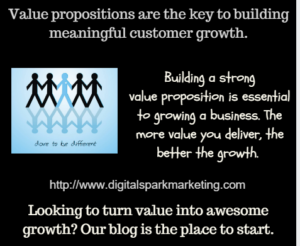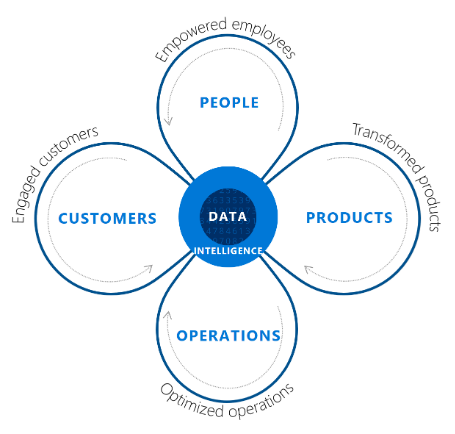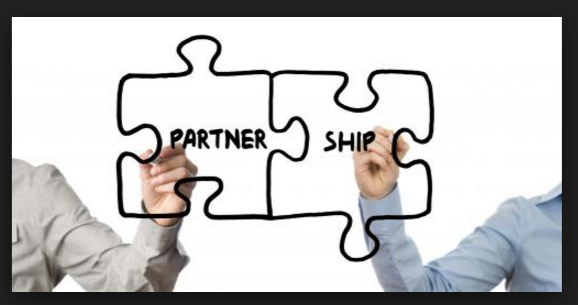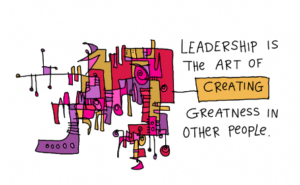| Don’t fall prey to the myth that only some people have the creativity skill and you are not of the chosen few. We are all creative; it’s just a matter of figuring out in what way. So find things you’re curious about and are interesting to you, use your imagination a little, stay motivated and work at it, and surround yourself with others who are doing the same. So how do you boost creativity? Here are 8 suggestions to improve your ability to exercise ideation: Be a detective Creatives and innovators always have enquiring minds. Are you asking enough questions to get deeper and understand the problem as much as you can? Make quiet time Most ordinary days of the average people include an enormous amount of multitasking. Multitasking is, of course, is very destructive to the time and space of good creative thinking. Set time aside for team members’ quiet time to stimulate and let the mind wander until ideas flow. Challenge good The phrases good enough, this has always worked, and this is all the time we have to devote to this problem, etc. are very destructive to team creativity. Avoid these at all costs as they are enemy #1 to the best results. Foster Autonomy We all prefer control over our environments. According to a 2008 study by Harvard University, there is a direct correlation between people who have the ability to call their own shots and the value of their creative output. An employee who has to run every tiny detail by her boss for approval will quickly become numb to the creative process. The act of creativity is one of self-expression. Granting autonomy involves extending trust. By definition, your team may make decisions you would have made differently. The key is to provide a clear message of what results you are looking for or what problem you want the team to solve. From there, you need to extend trust and let them do their best work. Divergent thinking Try the quantity approach to new ideas. Use brainstorming to improve divergent thinking. Study and then connect ideas to get new ideas. Add play to the equation When looking for fresh new thinking to solve a problem, shake things up by adding some fun and play to the process. It always has the ability to shed stress and pressure on a team. Avoid these myths: Myths on Creativity … 17 to Stop Telling Yourself Now Explore new experiences Open up your new idea thinking. Do things in new and untried ways. Avoid the set ways of solving problems. Experiment Do as much experimentation as you can. Don’t worry about failures and allow the team to question any and all assumptions and consider even the craziest ideas. |
Tag: experiment
How to Boost Innovation for Business Opportunities
Are you one that believes that innovation and creativity can be learned? We are among that group. We also believe in suggestions to boost innovation for business opportunities through effective collaboration. Through a series of sparks and not a single flash of insight.
Collaboration drives innovation because ideas always emerge from a series of sparks – never a single flash of insight.
Are you an innovative person? Problem-solver? Learner? All of the above? We consider ourselves in the group of all of the above.
Our continuous goal? Obtaining the best innovation. And at the top of our focus areas? Studying and understanding the problem at hand.
Albert Einstein once said that if he had an hour to solve a problem, he’d spend 55 minutes thinking about the problem and 5 minutes thinking about solutions. That is our way of thinking. But not most people.
Creativity and innovation don’t often happen in a vacuum. As the author Steve Johnson says, chance favors the connected mind. When people are together, talking, laughing, thinking, exploring — they’re going to throw out ideas.
As Robert Weisberg pointed out in his excellent book, Creativity: The Myth of Genius, great creative thinking arises out of rather ordinary thought processes. Genius is, of course, helpful, but not essential and many of those that are considered geniuses have fairly normal IQs.
So the secret to unlocking creativity is not grabbing for wild ideas or waiting for divine inspiration, but through knowing your field, defining good problems, taking useful ideas from separate domains, and tenaciously seeking out effective solutions. That’s within the reach of all of us.
Creativity comes from combining ordinary things in extraordinary ways.
These ideas trigger something in someone else’s mind, and it snowballs. Before long, this group of folks has developed an innovative solution that wouldn’t have been possible without the collective collaboration.
Related: Innovative Business Ideas … Creativity, Invention, or Innovation?
Don’t fall prey to the myth that only some people are innovative and you’re people are not of the chosen few. We are all innovative; it’s just a matter of figuring out in what way.
So find things you’re curious about and are interesting to you, use your imagination a little, stay motivated and work at it, and surround yourself with others who are doing the same. The best way to avoid those nasty silos.
Nobody likes a silo. Or a stovepipe for that matter. These insular structures restrict the flow of information, which makes it hard to coordinate action and adapt to change. In some cases, it can even lead to disastrous consequences like the General Motors ignition switch scandal. So it should be no surprise that managers try to break down silos whenever they can.
The problem is that when you reorganize to break down one kind of silo, you inevitably create others. If, for example, your company is organized around functional groups, then you will get poor collaboration around products. But when you reorganize to focus on product groups, you get the same problem within functions. The answer is to not try to eliminate silos, which are inevitable and often have important benefits but to connect them effectively. Yet that’s easier said than done.
How do you and your team boost innovation? Here are 10 suggestions to improve your ability to exercise ideation within your team:
Encourage risk-taking
Zappos as a company is known as much for its culture as for its innovative business model. The company has built a business that is growing rapidly by allowing individuals the freedom to take creative risks without that overwhelming sense of fear or judgment.
They tell their employees to say what you think, even if it is controversial. Make tough decisions without agonizing excessively. Take smart risks. Question actions inconsistent with our values.
Another interesting example: A software company in Boston gives each team member two “corporate get-out-of-jail-free” cards each year. The cards allow the holder to take risks and suffer no repercussions for mistakes associated with them.
At annual reviews, leaders question their team members if the cards are not used. It is a great way to encourage risk-taking and experimentation. Think this company comes up with amazing ideas and innovations? Absolutely.
Be a detective

Creatives and innovators always have enquiring minds. Are you and the team asking enough questions to get deeper and understand the problem as much as you can?
Make quiet time
Most ordinary days of the average worker includes an enormous amount of multitasking. Multitasking is, of course, is very destructive to the time and space of good innovative thinking. Set time aside for team members’ quiet time to stimulate and let the mind wander until ideas flow.
Challenge good
The phrases good enough, this has always worked, and this is all the time we have to devote to this problem, etc. are very destructive to team innovation. Avoid these at all costs as they are enemy #1 to the best results.
Foster autonomy
We all prefer control over our environments. According to a 2008 study by Harvard University, there is a direct correlation between people who have the ability to call their own shots and the value of their creative output.
An employee who has to run every tiny detail by her boss for approval will quickly become numb to the innovative process.
The act of innovation is one of self-expression. Granting autonomy involves extending trust. By definition, your team may make decisions you would have made differently.
The key is to provide a clear message of what results you are looking for or what problem you want the team to solve. From there, you need to extend trust and let them do their best work.
Divergent thinking
Try the quantity approach to new ideas. Use brainstorming to improve divergent thinking. Study and then connect ideas to get new ideas.
Add play to the equation
When looking for fresh new thinking to create more innovation, shake things up by adding some fun and play to the process. It always has the ability to shed the stress and pressure on a team
Explore new experiences
Open up your new idea thinking. Do things in new and untried ways. Avoid the set ways of being innovative.
Experiment

Do as much experimentation as you can. Don’t worry about failures and allow the team to question any and all assumptions and consider even the craziest ideas.
Always ask why
Here is a favorite story that explains this technique quite well. The story is about why you should ask why. It comes from Ideas Champions. A consulting company like us (but bigger and more well-known), who specialize in creativity, innovation, team building, and leadership. All favorite topics of ours. So we keep up with this team.
The story is about a big problem in one of our favorite monuments … the Jefferson Memorial in Washington DC.
Simply put, birds in huge numbers were pooping all over it, which made visiting the place a very unpleasant experience.
Attempts to remedy the situation caused even bigger problems since the harsh cleaning detergents being used were damaging the memorial.
Fortunately, some of the National Parks managers assigned to the case began asking WHY as in Why was the Jefferson Memorial so much more of a target for birds than any of the other memorials?
A little bit of investigation revealed the following:
The birds were attracted to the Jefferson Memorial because of the abundance of spiders, a gourmet treat for birds.
The spiders were attracted to the Memorial because of the abundance of midges (insects) that were nesting there.
And the midges were attracted to the Memorial because of the light.
Midges, it turns out, like to procreate in places where the light is just so and because the lights were turned on, at the Jefferson Memorial, one hour before dark, it created the kind of mood lighting that midges went crazy for.
So there you have it: The midges were attracted to the light. The spiders were attracted to the midges. The birds were attracted to the spiders. And the National Parks workers, though not necessarily attracted to the bird poop, were attracted to getting paid so they spent a lot of their time (and taxpayer money) cleaning the Memorial.
How did the situation resolve? Very simply. They nailed the understanding of the problem, so an innovative but simple solution was much easier.
After reviewing the curious chain of events that led up to the problem, the decision was made to wait until dark before turning the lights on at the Jefferson Memorial. About as simple a solution as you could get. Right?
That one-hour delay was enough to ruin the mood lighting for the midges, who then decided to have midge sex somewhere else.
No midges, no spiders. No spiders, no birds. No birds, no poop. No poop, no need to clean the Jefferson Memorial so often. Case closed.
Now, consider what solutions might have been forthcoming if those curious National Parks managers did not stop and ask WHY:
Hire more workers to clean the Memorial
Ask existing workers to work overtime
Experiment with different kinds of cleaning materials
Put bird poison all around the memorial
Hire hunters to shoot the birds
Encase the entire Jefferson Memorial in Plexiglas
Move the Memorial to another part of Washington
Close the site to the general public
Technically speaking, each of the above solutions was a possible approach, but at great cost, inconvenience, and with questionable results. Not great solutions.
The bottom line
Now, think about YOUR business, YOUR life.
What problems are you facing that could be approached differently simply by asking WHY, and then WHY again, and then WHY again … until you get to the real definition of the problem?
If you don’t, you may just end up not correctly defining the problem. Not good. Nothing worse than solving the wrong problem. So put in enough time to understanding and defining your problem. Don’t leap to problem-solving before you do. Lots of whys help us explore and thoroughly define the problem.
The truth is that innovation is never a single event. It requires the discovery of new insights, the engineering of solutions around those insights, and then the transformation of an industry or field. Technology does not produce progress by itself, we need to find important problems for it to solve and then must change how we work in order to take advantage of it.
So while smartphone apps are cool and add convenience to our lives, the real impact of digital technology lies in front of us, when second-order technologies are applied to completely new problems.
Remember to practice these problem-solving skills as well as asking lots of why questions to form new ideas.

All you get is what you bring to the fight. And that fight gets better every day you learn and apply new creative ideas.
When things are not what you want them to be, what’s most important is your next step.
Try. Learn. Improve. Repeat.
Are you devoting enough energy improving your creativity, innovation, and ideas?
Do you have a lesson about making your creativity better you can share with this community? Have any questions or comments to add in the section below?
Mike Schoultz is the founder of Digital Spark Marketing, a digital marketing and customer service agency. With 40 years of business experience, he blogs on topics that relate to improving the performance of your business. Find him on Twitter, and LinkedIn.
More reading from Digital Spark Marketing’s Library:
Competitive Growth Strategy … the Story of In-N-Out Burger
13 Motivators for Creating a Change and Adaptability Culture
Handling Customer Complaints … 8 Mistakes to Avoid
Embracing Change is Key to Improving Continuous Learning
Are you someone that is consistently embracing change? Feels that it is ok to be wrong because it forces us to explore? From an early age, we are taught it’s bad to make mistakes and they need to be avoided … otherwise, there can be unpleasant consequences. However, as we will discuss in this article, embracing change from our mistakes is key to improving continuous learning.
Being right keeps us in place. Being wrong forces us to explore. -Steven Johnson
The truth, however, is that failure and making mistakes is a necessary part of success and it cannot be avoided.
Related: Why Questioning is Critical to Learning and Problem Solving
It can only be avoided if you decide to “play it safe” for the rest of your life and if you are happy to remain in your comfort zone and stop expanding and enjoying the exhilarating feeling of continuous growth and development.
But, that’s not really what you want, right?
The amount of new technical information is doubling every two years. EVERY TWO YEARS. The top 10 jobs that were in demand in 2013 didn’t exist in 2004. We are currently preparing students for jobs that don’t yet exist, using technologies that don’t yet exist.
All this in order to solve problems we don’t even know are problems yet. Scary, isn’t it?
For students starting a 4 year technical or college degree, one half of what they will learn in their first year of study will be outdated by their third year of study. We are clearly living in exponential times, aren’t we?
For more background see Shift Happens 2013.
So we hope you note and appreciate the amount of change going on in the world and the rate of change acceleration. The implication of the rapidity of change means everything we learn has an extremely short shelf life. Big implications here for the future of learning.
So what is your choice for the top learning issue of the day? Continuous learning is our choice. Taught in schools? We have not found many that are changing their learning and education strategy based on this environment. In fact, most seem to be hunkering down even more into the past. We were very surprised by this finding.
Here are some thoughts on how to improve learning in this type of environment:
Compete and collaborate
Connecting with others in the internet world is a great way to share ideas and solicit feedback, new views, and ideas. Once you have found some interesting connections who share like goals, try a collaboration project or two. Collaboration is an excellent way to expand learning in a sharing environment.
If we as learners embrace the new paradigm of active learning, curiosity, and imagination, we could offer a spark to others around us and may even build a new movement.
Always utilize a feedback loop
You need to continuously reflect on what you have learned, both from successes and failures. A feedback loop is a necessity and it doesn’t happen on its own. Plan ways to see what is working and what is not.
Learn from everyone
By observing life’s experiences around us and careful reflection of what we observe, we can gather facts and information to learn new solutions and methods. Increase your ability to ‘connect the dots’ around you. Take notes and revisit them often.
Embrace the mess of complex learning. In this new world of continuous learning, we are all teachers as well as learners. We realize learning is often an ugly task. Accept that the process of trial and error is an acceptable learning process. And watch carefully what others are learning all around you in both the business and personal environment.
Over develop curiosity
Continually think about what you don’t know, don’t be afraid of confusing our learning and evoking tough questions. You can develop curiosity. This curiosity can be used to tailor robust methods of blended learning. Curiosity must come first.
Questions can be fantastic windows to great learning, but not the other way around. Build your skill of curiosity … it is a necessity for good learning.
Build a gaming disposition
Never stop at eureka. We believe iterative sessions are the best approach. With a gaming disposition, measuring results to improve performance is continuous.
Love embracing change
You must be someone who loves change and sees it as opportunity. You can’t worry about failure, because most things don’t work the first time, do they?
Find things that drive your passion
Lots of time you will know what drives your passion. Other times you won’t. But you must be willing to try lots of new things.
Learn to tinker and tweak
Creative tinkering is the best way to speed up the gathering of new ideas and gets your entire team as owners of the process. Remember, like anything else you are learning, there is no substitute for practical experience.
Be one that loves to play
In tinkering and tweaking, find ways to play and have fun. Nothing is better at improving your learning.
Experiment often

To get a good and long list of ideas, unusual ideas are welcomed. They can be generated by looking from new perspectives, experimenting, and suspending assumptions.
Expect failure and learn
We need to be learners that ask hard questions and explore what might work and what won’t. As a learner, we need to accept failure so we can use the oftentimes messy trial and error. Make failures and mistakes as learning sources (and the mistakes and failures need not be yours).
The bottom line
Since as much as 90% of what we learned in a life-time always come to us via visual cues, we should constantly enhance our perceptual sensitivity to the environment, according to information scientists. So, more than 500 years ago, Leonardo da Vinci was right when he said, use all our senses, especially our sense of sight.
Our power of observation and imagination depends on it. Productive thoughts often have their origins in the combinatorial play and dynamics of sensory inputs from environmental cues. In my view, our thinking cap is often governed by how far we can stretch our power of vision and imagination.

All you get is what you bring to the fight. And that fight gets better every day you learn and apply new ideas.
When things are not what you want them to be, what’s most important is your next step.
Test. Learn. Improve. Repeat.
Are you devoting enough energy continually improving your continuous learning?
Mike Schoultz is the founder of Digital Spark Marketing, a digital marketing and customer service agency. With 40 years of business experience, he blogs on topics that relate to improving the performance of your business. Find him on Twitter, and LinkedIn.
More reading on learning from Digital Spark Marketing’s Library:
The Nine Most Valuable Secrets of Writing Effective Copy
How Good Is your Learning from Failure?
10 Extraordinary Ways for Learning to Learn
Employ Clever Idea Creation from Prototype Engineering
Does your business conduct prototype engineering and testing of clever idea creation? How about trying new ways for innovation?
Effective prototyping may be the most valuable competence an innovative organization can hope to have.
-Michael Schrage
Before I give you some modern examples of prototype engineering, let me tell you an interesting story about Alexander Fleming. Have you ever heard of Alexander Fleming?
Here is an example of idea creations shown in this video.
With the advent of the Internet, the number of marketing options available to both budding and experienced entrepreneurs has become staggering.
When Alexander Fleming, a brilliant but sometimes haphazard scientist, returned to his lab after vacation holiday in 1928, he found his work ruined. A bacteria culture he had been growing was contaminated by fungus and, as it grew, it killed all the colonies it touched.

Most people would have simply started over, but Fleming was very curious about what had happened. And his curiosity caused him to switch his focus from the bacteria to the fungus itself.
First, identified the mold and the bacteria-killing substance, which he called “penicillin,” then he tested it on other bacteria cultures. Seemingly in a single stroke, Fleming had created the new field of antibiotics.
Is that how you see innovation? That’s how most of us see innovation. A flash of brilliance and Eureka! a new world is born. But not so fast.
The truth is far messier. In fact, it wasn’t until 1943—nearly two decades later—that penicillin came into widespread use and only then because it was accelerated by the effort helping World War II efforts.

But we need far better and faster results, don’t we? To achieve that, we need to discard old myths and deal with a process of change and innovation as it happens.
Truly breakthrough innovations are never a single event, nor are they achieved by one person, or even within a single organization. Rather, they happen when ideas combine to solve important problems.
Related post: Learn How to Think What No One Else Thinks
In Amanda Lang’s book, “The Power Of Why: Simple Questions That Lead to Success”, she talks about the importance of curiosity and it’s a connection to intelligence:
Curiosity is, therefore, strongly correlated with intelligence. For instance, one longitudinal study of 1,795 kids measured intelligence and curiosity when they were three years old, and then again eight years later.
Researchers found that kids who had been equally intelligent at age three were, at eleven, no longer equal.
The ones who’d been more curious at three were now also more intelligent, which isn’t terribly surprising when you consider how curiosity drives the acquisition of knowledge.
The more interested and alert and engaged you are, the more you’re likely to learn and retain.
In fact, highly curious kids scored a full twelve points higher on IQ tests than less curious kids did.
New idea creation
As I was reading this book, there were two things that came to my mind:
How often do we ask our staff to brainstorm “questions” as opposed to “answers”? Is this not as valuable a practice?
and then…
Could starting every week off asking “what do you wonder?”, and having them ask questions and provide ideas, make a huge impact on creating new ideas?
New idea creation … activities to generate ideas
So what are some effective ways businesses innovate? Let me ask you a few personal questions to get you thinking about the innovation process a different way.
Do you drive to work the same way every day? Probably! Do you read the same publications—or the same type of publications? Sure! How about TV and the Internet?
Watching the same group of shows or using the same set of websites is also a common habit. When you do this, what do you feel? You probably get a lot of familiar and comfortable feelings, don’t you?.
But true innovation often doesn’t make us comfortable. It makes us uncomfortable. And yet, it is in that discomfort that the new ways, the new ideas, and the new feelings come to light.
When you drive to work via a different route, you see different places and sights. If you go to the newsstand and peruse the magazines that you never otherwise look at, you will see things you simply would never think about otherwise
So do you think businesses experiment and test lots of new ideas?
Check out these new beer cans and bottles and their features …
Cold Activation – special ink on bottles and cans turns special color when sufficiently cold.
Vortex Bottles – Bottles come with a swirling grove in the neck, meant to improve the taste by aerating, and unlocking aromas and taste.
Aluminum Pints/Bottles – resealable screw caps.
Writable Bottles – consumers can write messages using key or coin.
Experiment and test fearlessly
Not all of your ideas will be something you implement, like several of the beer can packaging ideas. But the testing itself will invariably lead you to understand customer needs better, and that will lead you to create even more new ideas.
Remember … whoever tries the most stuff usually wins.

What are some of your experiences with utilizing prototype engineering and testing? What about building an innovation culture in your business? Please share an experience with this community.
Need some help in improving the innovation process for you and your staff? Innovative ideas to help the differentiation with your toughest competitors? Or maybe ways to innovate new products and services?
Call today for a FREE consultation or a FREE quote. Learn about some options for innovation workshops to get noticeable results.
Call Mike at 607-725-8240.
All you get is what you bring to the fight. And that struggle gets better every day you learn and apply new innovative ideas.
When things are not what you want them to be, what’s most important is your next step. Call today.
Test. Learn. Improve. Repeat.
Do you have a lesson about making your innovation learning better you can share with this community? Have any questions or comments to add in the section below?
Digital Spark Marketing will stretch your thinking and your ability to adapt to change. We also provide some fun and inspiration along the way. Call us for a free quote today. You will be amazed at how reasonable we will be.
More reading on creativity and innovation from Digital Spark Marketing’s Library:
Learn How to Think What No One Else Thinks
Generating Ideas by Convergent Thinking
Amazon and Managing Innovation … the Jeff Bezos Vision
Mike Schoultz is a digital marketing and customer service expert. With 48 years of business experience, he consults on and writes about topics to help improve the performance of small business. Find him on Facebook, Twitter, Quora, Digital Spark Marketing, and LinkedIn.
Michael Jordan Leadership is Not What You Think It Is
Michael Jordan Eisenhower certainly understood the concepts of being an effective, influential leader, didn’t he? Spot on. I have been in the military and business world for forty years, and I often get asked what it takes to be an effective, influential leader. And often Michael Jordan leadership is not what you think.

Leadership is the art of getting someone else to do something you want to be done because he wants to do it.
– Dwight Eisenhower
Being such a leader is a lifelong learning process. You are never done learning. Every great leader always looks for ways to improve their ability to lead and influence.
Related: Increase Influence through Good Leadership Qualities
Leadership can be deceiving if you let it, however. Consider these different thoughts on leadership:
Not about you
Many of us want to be effective leaders … ones that can make a difference. But that doesn’t happen by talking about it or self-marketing.
It takes time to build connections, to take a genuine interest in people. In true leadership situations, listening comes first.
Perhaps the worst personal trait I’ve personally observed is ego. We all have an ego, but the ego I’m talking about is the ‘superego’ that dominates. I’ve found if a leader is good at what they do, they won’t have to tell others about it.
It’s all about them, isn’t it? If a leader doesn’t understand the concept of “service above self” they will not engender the trust, confidence, and loyalty of those they lead. Any leader is only as good as his or her team’s desire to be led by them. Real leaders take the blame and give the credit – not the other way around.
More to learn: Success Enablers of Highly Creative Leaders
Michael Jordan leadership … create the vision
Da Vinci once said:
There are three classes of people: those who see, those who see when shown, and those that do not see.
For those leaders in the second and especially third groups, easily lose the confidence of those they are trying to lead. Their lack of vision cannot inspire teams, motivate performance, or create sustainable value.
A leader’s job is to align the organization around a clear and achievable vision. This cannot occur when the blind lead the blind.
Michael Jordan leadership … building open and honest relationships with communication
“Because I said so” leadership might work for a child, but it doesn’t work with adults. In many cases it creates frustration and confusion, resulting in more infractions and disdain for leadership.
As an alternative, focus on open and honest communication where you can carefully explain why you focus on your objectives and what you are aiming to accomplish.
Michael Jordan leadership … connecting is all there is
President Lincoln was once asked how long it took him to write the Gettysburg Address. He replied: ‘All my life.’
Lincoln knew who he was and what he stood for and that influenced his entire perspective on life. Most people are the same … they want to know who you are and what you stand for before they follow you. Leadership is a two-way agreement.
Rudy’s three keys to leadership
Rudy Giuliani, the former mayor of New York, tells us in his book Leadership that there are three keys to leadership:
If you don’t love working with people, then do something else.
Be clear what you stand for.
If you are going to lead, be optimistic. If you are not, your followers can hardly be expected to be.
Michael Jordan leadership … qualities of great leaders
In football, winning is all about assembling a team, devising a strategy, and positioning the players to do their jobs well. Coaches take their well-thought-out game plan and instruct the players, so each understands their role to ensure victory.
The play, which is the idea, is certainly important to the campaign, but the key to winning is the players executing as directed – knowing their role and following through as they have been coached.
The key to success is no different in business and marketing. You need a great strategy that a group of employees can follow to achieve their goals. You need a great leader to create the appropriate structure and protocols so the staff can execute to the fullest.
The idea itself should not be leading your efforts. The idea is not a magic wand to ensure that all of your goals are accomplished and that your revenues increase.
Letting the idea lead your organization is allowing the tail to wag the dog. Ideas are only as good as the implementation plans and people who are executing them. They are only as effective as the leadership set the course.
Michael Jordan leadership … lead by asking questions
Much research shows that questions uncover reality and let other people find solutions rather than having to rely on you.
So why do leaders instruct more than asking questions?
It is simple. Leaders often need to appear infallible and most often believe the best leader is a solution finder. And most importantly, many leaders don’t ask questions because they fear answers they won’t like.
What employees want most
In a research study, McKinsey consultants asked people:
What makes for a fantastic work environment?
The top three answers were:
It’s open and honest. I want to be able to trust.
I’m stretched and valued. If I am not there, I’ll know I’ll be missed.
Permission to take risks by making decisions. Don’t just give me tasks, empower me.
Source: Rene Carayae
Leadership as empathy? Tim Brown, the CEO and President of IDEO, the global innovation, and design firm, describes empathy as making an effort to “see the world through the eyes of others, understand the world through their experiences, and feel the world through their emotions.” A novel way to view leadership isn’t it?
Key takeaways
The moral of this story is company culture has a great influence on leadership development. If these different thoughts are possessed by your current leadership team or your emerging leaders, you will be in a good position for the road ahead.
Which of these leadership thoughts stand out to you? Do you have any other thoughts of effective leaders worthy of mention? Leave a comment and share your insights with others…

So what’s the conclusion? The conclusion is there is no conclusion. There is only the next step. And that next step is completely up to you. But believe in the effectiveness of great leadership. And put it to good use in adapting to changes in your business environment.
It’s up to you to keep improving your ability to lead. Lessons are all around you. In many situations, history may be providing the ideas and or inspiration. But the key is in knowing that it is within you already.
All you get is what you bring to the fight. And that fight gets better every day you learn and apply new lessons. When things go wrong, what’s most important is your next step.
Test. Learn. Improve. Repeat.
Are you devoting enough energy continually improving your continuous learning? Do you have a lesson about making your learning better you can share with this community? Have any questions or comments to add in the section below?
Mike Schoultz is the founder of Digital Spark Marketing, a digital marketing and customer service agency. With 40 years of business experience, he blogs on topics that relate to improving the performance of your business. Find them on G+, Twitter, and LinkedIn.
Digital Spark Marketing will stretch your thinking and your ability to adapt to change. We also provide some fun and inspiration along the way. Call us for a free quote today. You will be amazed at how reasonable we will be.
More leadership material from Digital Spark Marketing’s Library:
Build an Effective Team by Being a Talent Hound
Secrets to Becoming a Remarkably Mindful Leader
Leadership Characteristics That Improve Influence |






